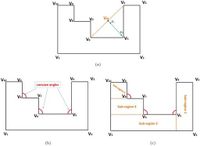The world of robotics continues to evolve as researchers from Shandong Jianzhu University unveil a remarkable improvement in coverage path planning for irregular regions. This new method, termed the Improved Genetic Algorithm based on Bi-level Co-evolution (IGA-CPP), addresses the unique challenges faced in robot navigation across complex terrains, such as those found in oceanic environments.
Graphs and figures within the study demonstrate that traditional methods for path planning often require transforming irregular regions into regular shapes—a process that can lead to inefficiencies and significant increases in invalid working area. In contrast, the IGA-CPP offers a highly optimized approach that enhances robots’ exploration capabilities while minimizing energy consumption.
The authors of the article explain that the IGA-CPP operates through three main steps: region decomposition, sub-region selection, and coverage path generation. Initially, the method divides the irregular region into manageable sub-regions, eliminates small areas that contribute little to the overall path efficiency, and subsequently employs a unique bi-level co-evolutionary strategy to optimize the order of traversal across sub-regions and their respective internal paths.
The overall aim of this improvement is twofold: it not only accelerates the convergence of the genetic algorithm, but also reduces computational workload, a significant advantage in real-time applications such as autonomous underwater vehicle (AUV) navigation.
In their experiments, the researchers put IGA-CPP through rigorous simulations across various complex environments, achieving substantial reductions in the length of travel paths compared to traditional algorithms. They noted that when the parameters for initial population size, mutation factor, and crossover probability were optimized, IGA-CPP achieved a much faster convergence rate, particularly evident when explored against algorithms like Particle Swarm Optimization (PSO) and Differential Evolution (DE).
Results also demonstrated that IGA-CPP can handle intricate irregular terrains effectively, with optimized path lengths showing consistent improvement as more sub-regions were introduced. In a comparative study, the authors highlighted the efficacy of their algorithm across three different testing scenarios, showcasing its reliability across fixed and unfixed start/end points.
As technology advances, the implications of such research could reverberate throughout numerous fields, most notably in oceanographic surveys and environmental monitoring. The authors of the article conclude that the IGA-CPP not only solves existing problems associated with irregular coverage paths but also sets a foundation for further enhancements in robot navigation technologies.

